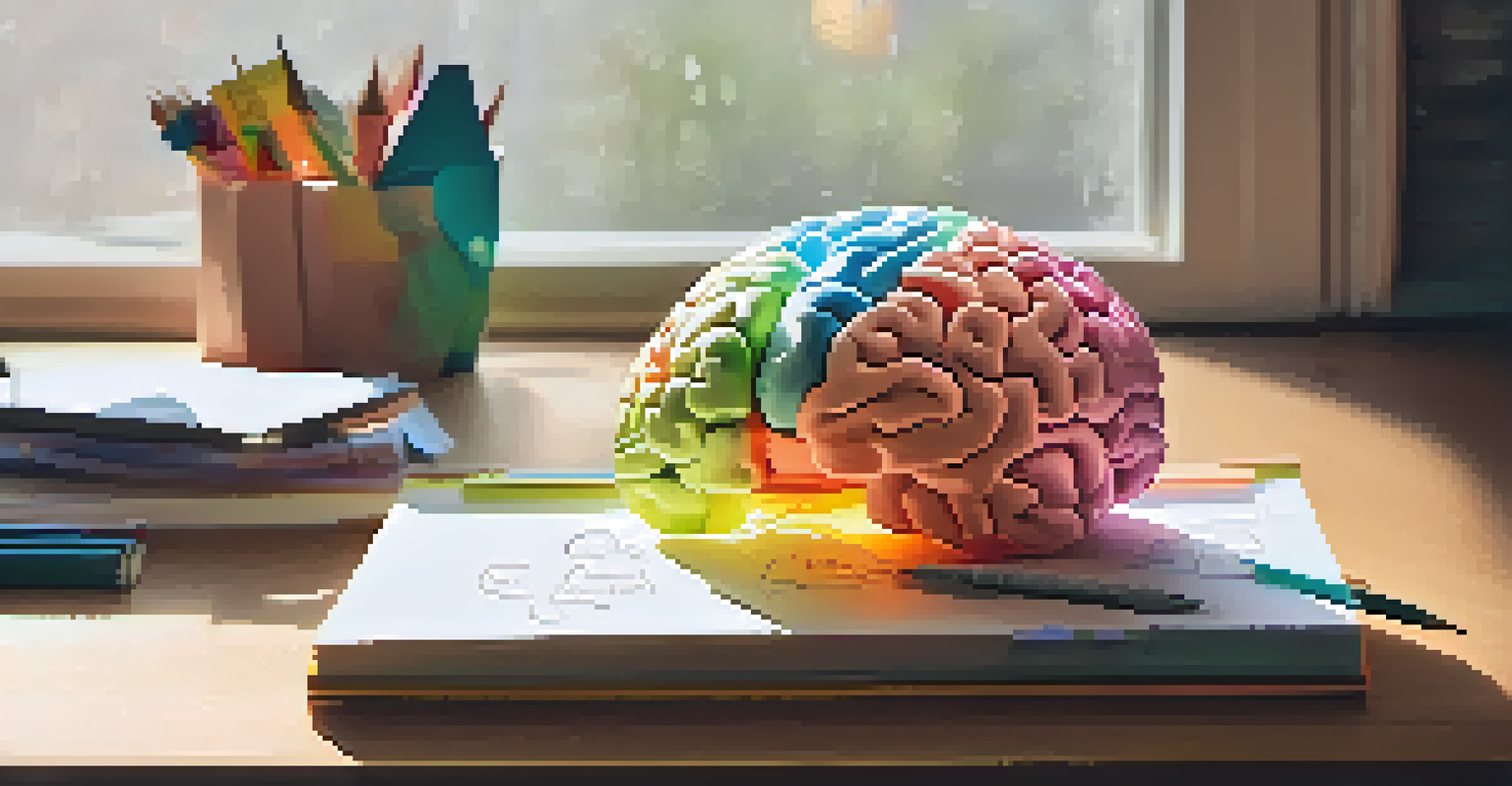Neuroscience of Learning Agility: Adapting to Change

Understanding Learning Agility and Its Importance
Learning agility refers to the ability to learn from experiences and adapt quickly to new situations. It plays a crucial role in personal and professional development, particularly in today's fast-paced world. Those who demonstrate high learning agility are often better equipped to handle change, making them valuable assets in any organization.
The only way to make sense out of change is to plunge into it, move with it, and join the dance.
The importance of learning agility cannot be overstated; it enables individuals to navigate uncertainties and seize opportunities. For example, an employee who can quickly learn a new software program will not only enhance their productivity but also contribute to the team’s overall success. Essentially, learning agility is about being flexible and open to new ideas.
Neuroscience provides insights into how our brains process information and adapt. Understanding these processes can help individuals cultivate learning agility, leading to more effective adaptation during times of change.
The Brain's Role in Learning and Adaptation
Our brains are incredibly complex organs that continuously adapt based on our experiences. This neuroplasticity, or the brain's ability to reorganize itself, is fundamental to learning. When we face new challenges, our brain forms new neural connections, allowing us to approach problems from different angles.

For instance, think of learning a musical instrument: the more you practice, the more pathways your brain creates to enhance your skills. This is a direct application of neuroplasticity, showcasing how repeated exposure and practice can lead to improved performance. Similarly, adapting to change requires us to harness this capacity effectively.
Learning Agility Fuels Adaptation
Learning agility enables individuals to navigate change effectively and seize new opportunities in both personal and professional contexts.
By understanding how the brain functions during learning, we can develop strategies to enhance our adaptability. Techniques such as mindfulness and reflection can help strengthen these neural pathways, ultimately fostering a more agile mindset.
Emotional Intelligence's Impact on Learning Agility
Emotional intelligence (EI) is the ability to recognize and manage our emotions and those of others. This skill can significantly influence learning agility, as it allows individuals to navigate interpersonal dynamics more effectively. People with high EI are often more resilient in the face of change, enabling them to adapt seamlessly.
Intelligence is the ability to adapt to change.
For instance, consider a leader who faces organizational restructuring. A leader with high emotional intelligence may recognize their team’s anxieties and address them, fostering a supportive environment. This not only eases the transition but also encourages team members to embrace change positively.
Thus, developing emotional intelligence can enhance one's learning agility. By being aware of our emotions and those around us, we can better respond to challenges and rapidly adjust to new circumstances.
The Role of Feedback in Enhancing Learning Agility
Feedback is a critical component of the learning process, helping individuals understand their strengths and areas for improvement. Constructive feedback encourages a growth mindset, prompting learners to embrace challenges as opportunities for development. This mindset is essential for cultivating learning agility.
For example, in a workplace setting, regular feedback sessions can help employees reflect on their performance and make necessary adjustments. Rather than viewing feedback as criticism, individuals who are agile learners see it as a chance to grow and improve, enabling them to adapt more effectively to change.
Emotional Intelligence Enhances Agility
High emotional intelligence allows individuals to manage their emotions and those of others, fostering resilience and adaptability during times of change.
Incorporating feedback into the learning process can foster resilience and adaptability. By actively seeking and utilizing feedback, individuals can enhance their learning agility and better prepare themselves for future challenges.
Creating a Culture of Learning Agility in Organizations
Organizations play a crucial role in fostering learning agility among their employees. By creating a culture that values continuous learning and adaptation, companies can prepare their workforce for the inevitable changes in the market. This involves encouraging experimentation and allowing employees to learn from their mistakes.
For instance, a company that supports ongoing training and development initiatives can help employees stay current with industry trends. When employees feel supported in their learning journeys, they are more likely to take risks and embrace change, leading to improved overall performance.
By prioritizing a culture of learning agility, organizations can enhance their adaptability. This not only benefits individual employees but also contributes to the organization's long-term success in a constantly evolving landscape.
Practical Strategies to Enhance Your Learning Agility
There are several practical strategies individuals can adopt to enhance their learning agility. First, adopting a growth mindset can significantly impact how you approach challenges. Instead of fearing failure, see it as an opportunity to learn and grow, fostering resilience.
Additionally, seeking diverse experiences can broaden your perspective and enhance adaptability. Engaging in new activities, collaborating with different teams, or even exploring different industries can provide valuable insights and skills that improve your agile learning capabilities.
Feedback Cultivates Growth Mindset
Constructive feedback encourages a growth mindset, helping learners view challenges as opportunities for improvement and enhancing their learning agility.
Finally, regular self-reflection is essential. Taking the time to assess your experiences and learning can help you identify patterns, strengths, and areas for improvement, ultimately leading to greater flexibility and adaptability in the face of change.
The Future of Learning Agility and Neuroscience
As our understanding of neuroscience continues to evolve, so does our approach to learning agility. Emerging research highlights the importance of integrating neuroscience principles into learning and development strategies. This can lead to more effective training programs that align with how our brains naturally learn and adapt.
For instance, incorporating techniques such as spaced repetition or interactive learning can optimize the learning experience. These methods align with our brain's ability to retain information, making the process more engaging and effective. Such innovations can significantly enhance an individual’s capacity for learning agility.

Looking ahead, the integration of neuroscience with learning strategies presents exciting possibilities. By harnessing this knowledge, both individuals and organizations can better prepare for the challenges of an unpredictable future.